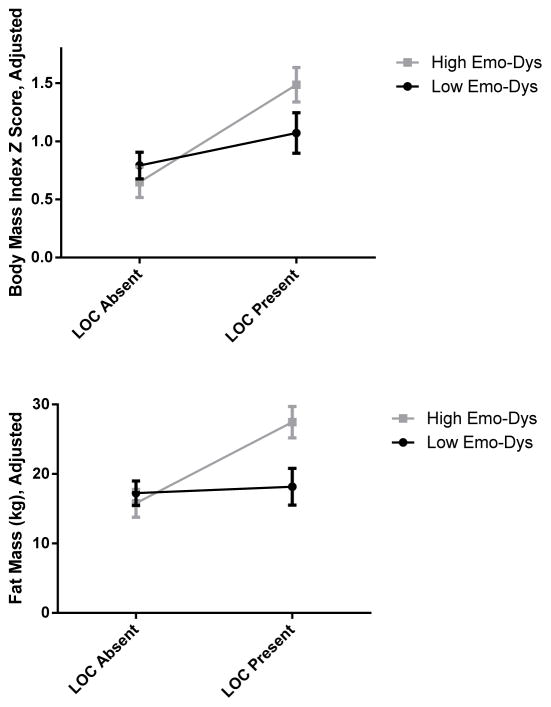Figure 1.
Emotion dysregulation moderated the link between LOC status and body mass variables such that youth with self-reported LOC eating and high parent-reported emotion dysregulation had significantly more body mass and fat mass
After controlling for age, sex, race, puberty, and height, the link between LOC status and BMIz did not differ significantly among those with low parent-reported emotion dysregulation, F (1, 208) = 1.79, p = .18, partial eta2 = .01, but did significantly differ among those with high parent-reported emotion dysregulation, F (1, 208) = 16.91, p < .001, partial eta2 = .08. Similarly, the link between LOC status and fat mass did not differ significantly among those with low parent-reported emotion dysregulation, F (1, 207) = .09, p = .77, partial eta2 = <.001, but did significantly differ among those with high parent-reported emotion dysregulation, F (1, 207) = 14.17, p < .001, partial eta2 = .02. Youth with LOC eating and high emotion dysregulation had significantly higher body mass and fat mass relative to those with low emotion dysregulation.

